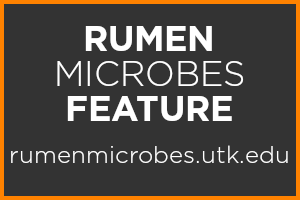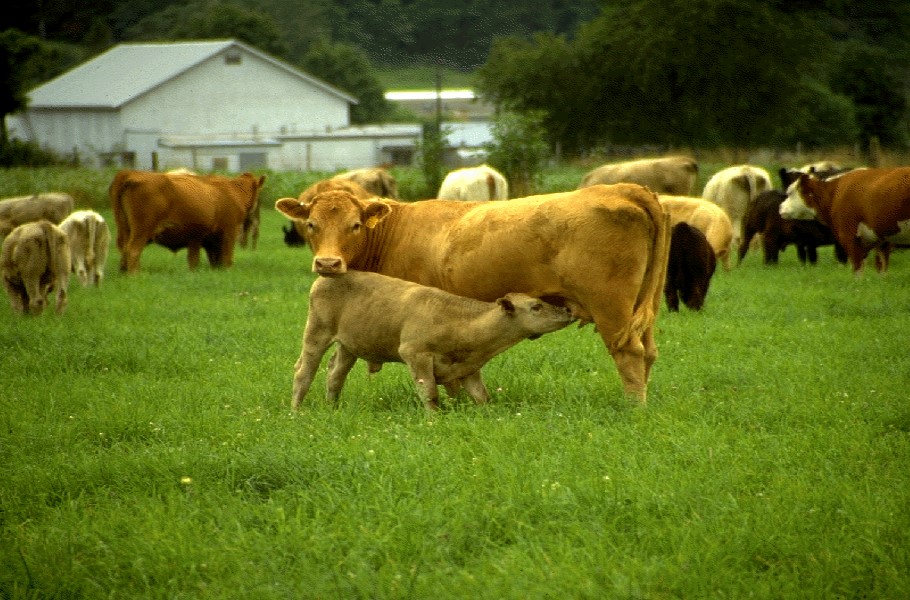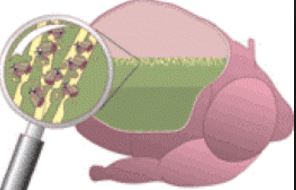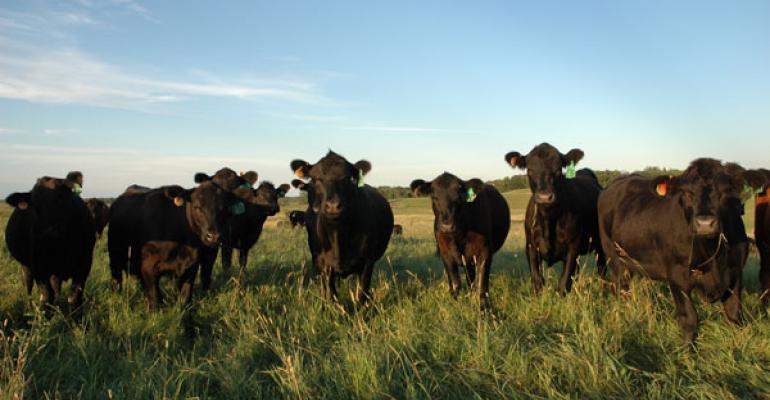
This highlighted microbe features a methane-producing species of archaea, Methanobrevibacter ruminantium. Mbb. ruminantium was the first methanogenic archaeal species to have its genome fully sequenced and has been studied extensively to reduce methane emissions from ruminants.
Please click on the image hotspots to learn more about this featured microbe.
This feature was created by: Emily Melchior

Learn more

The Methanobrevibacter genus dominates the archaea in the rumen, where on average Mbb. ruminantium accounts for approximately 27% of archaea (Leahy et. al 2010). Photo courtesy of AllAboutFeed.net.
Learn more

Methanogens like Mbb. ruminantium produce methane through normal digestion of feedstuffs, particularly highly fibrous feedstuffs. The rod-shaped Mbb. ruminantium uses hydrogen and carbon dioxide to produce methane and flourishes with low energy diets. Photo provided by BeefMagazine.com.
Learn more

Methanogens are found in both the human and ruminant gut and are part of the cause of eructation (belching) in cattle. Photo courtesy of Pixbay.com.
Learn morel

Mbb. ruminantium are a type of methane-producing microbe belonging to a domain of life called archaea. These microbes do not contain a peptidoglycan layer within their cell wall, unlike bacteria. Micrograph courtesy of Zeikus and Bowen; doi: 10.1139/m75-019
Follow this link to view all of the interactive presentations for the Rumen Microbes series.